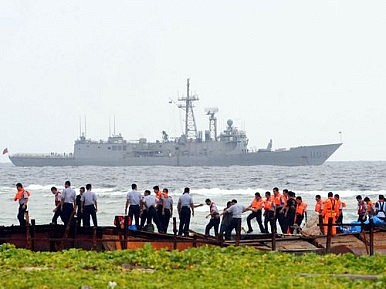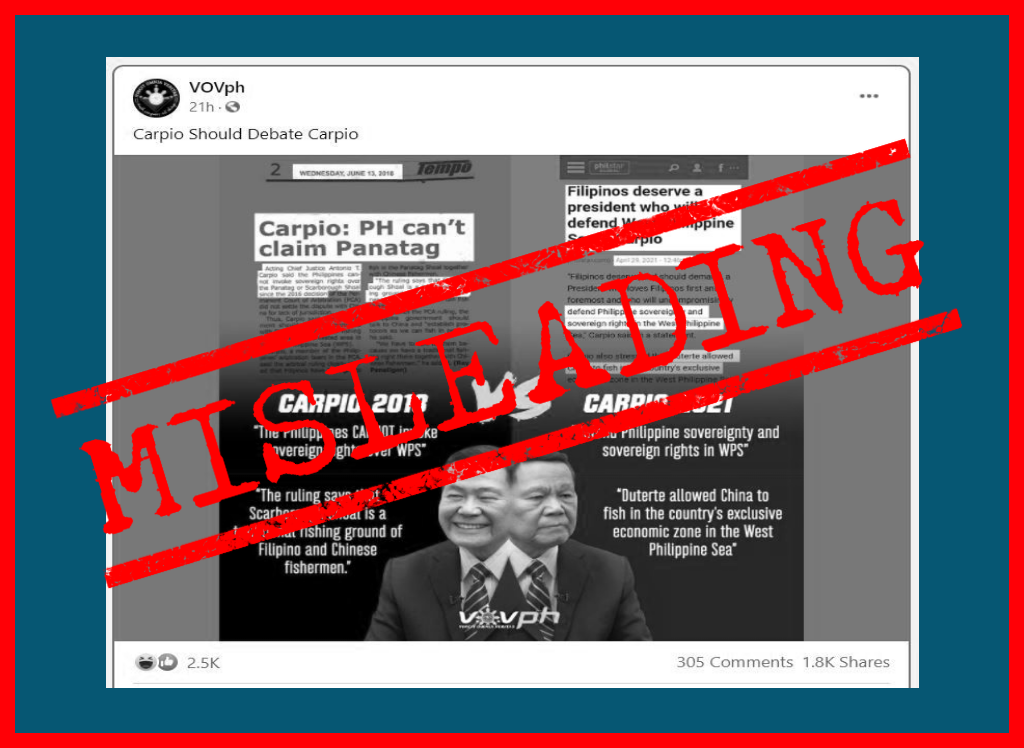
By ELLEN T. TORDESILLAS
LAST year, Itu Aba (also known as Taiping or Ligaw), the biggest feature in the Spratly group of islands being disputed by the Philippines, China, Vietnam, Malaysia, Brunei and Taiwan, figured in a controversy involving the appointment of the Solicitor General Francis Jardeleza to the Supreme Court.
Supreme Court Justice Lourdes Sereno opposed the appointment of Jardeleza to the High Court accusing him of treason when he omitted Itu Aba in the Memorial or memorandum filed before the United Nations Arbitral Tribunal in connection with the case filed by the Philippine questioning the legality of China’s nine-dashed line map which overreaches into the territory of the Philippines, Vietnam, Malaysia, Indonesia and Brunei.
Itu Aba is occupied by Taiwan, once part of China but now considers itself a sovereign state as Republic of China. The Philippines adopts a One-China policy which considers Taiwan a province of China.
Jardeleza was of the view that including Itu Aba in the Memorial would weaken the Philippine case because the island has a water source and can sustain human habitation and therefore entitled to maritime regimes. That would be outside the jurisdiction of the Arbitral Tribunal.
As a compromise by Jardeleza and the American lawyers handling the Philippine U.N. case, Itu Aba was included in the Memorial but it was not raised as a legal issue.
The High Court later cleared Jardeleza of the allegation of treason or disloyalty saying it was “a legal strategy.”

Last Jan. 29, in a lecture at the Ateneo de Manila, Senior Associate Justice Antonio Carpio touched on Itu Aba.
He said the Philippines has a strong position in asserting ownership of Itu Aba: “Palawan has an area of 1,464,900 hectares, and a 650 KM coast facing the West Philippine Sea, while Itu Aba has an area of 46 hectares and a 1.4 KM coast. The relevant coast for Palawan is about 495 KM, while the relevant coast for Itu Aba is about 1 KM, or a ratio of 1:495 in favor of Palawan.
“The critical criterion is the length of the opposing coastlines in the overlapping maritime zones. Palawan is uniquely endowed by nature with an unusually long coastline – a total of more than 650 kilometers facing the West Philippines Sea. The combined coastline of all the Spratly Islands is minuscule compared to Palawan’s coastline.
“International law, international jurisprudence and nature itself have all combined to give the Philippines an impregnable position in this maritime dispute.”
If the U.N. Tribunal favors the Philippine government’s assertion that Itu Aba is not capable of human habitation or economic life of its own, Carpio said the tribunal will then declare that Palawan has a full 200 nautical mile Economic Exclusive Zone facing the West Philippine Sea.
“This means that all submerged features within this EEZ, like the Reed Bank and Malampaya, are subject to exclusive economic exploitation by the Philippines in terms of fisheries, oil and gas, and mineral resources,” he said.
Furthermore, he said, “If the Philippines has a full 200 NM EEZ in Palawan facing the West Philippine Sea, only the Philippines can create artificial islands on submerged areas or erect structures on LTEs (Low Tide Elevation) within its 200 NM EEZ. Artificial structures or reclamations made by other countries, namely by China and Vietnam, are illegal.”

On the other hand, if the tribunal rules that Itu Aba is capable of human habitation or economic life of its own, Carpio said the case as far as Itu Aba and Palawan are concerned becomes an issue of overlapping EEZs, outside of the tribunal’s jurisdiction in view of China’s reservation excluding boundary delimitation issues from compulsory arbitration.
“In such a case, the tribunal will then refuse to proceed further except to declare that Itu Aba generates its own EEZ and that there is a boundary delimitation issue on overlapping EEZs between Palawan and Itu Aba. The tribunal has no jurisdiction over such boundary delimitation issue because China has opted out of compulsory jurisdiction over boundary delimitation issues, “he said.
What then would be the recourse of the Philippines?
Carpio said, “The recourse of the Philippines is to file a compulsory conciliation case against China to determine the maritime boundary between Itu Aba and Palawan in view of the overlapping EEZs. Compulsory conciliation is the specific remedy granted by UNCLOS against a member state that has opted out of compulsory arbitration on maritime boundary delimitation. While the decision of the compulsory conciliation commission is not binding, it has strong persuasive effect because it is a statement of what the international law is with respect to the particular dispute.”
How will the compulsory conciliation commission resolve the overlap issue?

Carpio said, “The distance between Palawan and Itu Aba is 225 NM. Palawan has a 495 KM coastline facing Itu Aba while Itu Aba has only a 1 KM coastline facing Palawan. These opposing coastlines, when projected to seaward, create the overlapping zones.
“The ratio of the length of the relevant coasts is 1:495 in favor of Palawan, showing not only a substantial disparity, but an overwhelming disparity. “
Carpio further explained: “Applying the UNCLOS ‘equitable solution’ principle (no disproportionate allocation of the relevant maritime area between islands with unequal coastlines), Palawan will be allocated a full 200 NM EEZ facing Itu Aba, and Itu Aba will be given the balance of 25 NM as follows: 13 NM EEZ and 12 NM territorial sea facing Palawan. Itu Aba will also have an EEZ facing seaward up to where Vietnam’s EEZ ends.
“Since Palawan can also claim an ECS (Extended Continental Shelf) beyond its 200-NM EEZ, there is an overlap between Palawan’s ECS and Itu Aba’s EEZ. This overlap, called the ‘grey area,’ will be delimited by the compulsory conciliation commission also in accordance with the “equitable solution” principle applied in the delimitation of the overlapping EEZs. Itu Aba will be entitled only to the living resources in its 13-NM EEZ facing Palawan. The non-living resources in the seabed and subsoil within Itu Aba’s 13-NM EEZ facing Palawan will belong to Palawan’s ECS
“Itu Aba will have an EEZ seaward to the South China Sea up to where Vietnam’s EEZ ends. However, the non-living resources in the seabed and subsoil, up to 70 NM (median line between outer limits of Vietnam’s and the Philippines’ EEZs) measured from the outer limit of Palawan’s EEZ, excluding the territorial sea of Itu Aba, will form part of Palawan’s ECS.
“In short, the Philippines is entitled to the oil, gas, minerals and sedentary species in the grey area seaward of Itu Aba – the overlap between Itu Aba’s EEZ and Palawan’s ECS beyond the 200 NM EEZ of Palawan.
“This is the ‘condominium’” solution applied to the ‘grey area.’”




